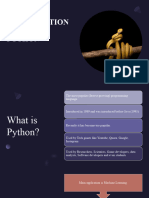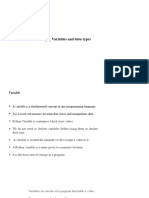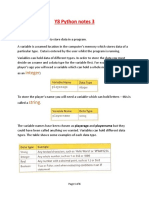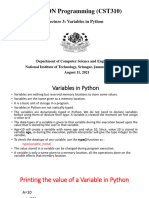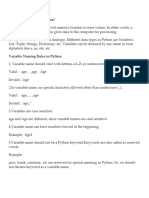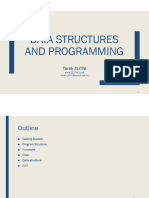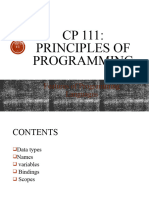0% found this document useful (0 votes)
32 views4 pages1 Variables
The document discusses variables in programming. It defines a variable as a name given to a memory location where data is stored. It explains that variables are used to handle data in a program and provides examples of declaring and initializing variables in Python.
Uploaded by
Vivek kumar ShuklaCopyright
© © All Rights Reserved
We take content rights seriously. If you suspect this is your content, claim it here.
Available Formats
Download as PDF, TXT or read online on Scribd
0% found this document useful (0 votes)
32 views4 pages1 Variables
The document discusses variables in programming. It defines a variable as a name given to a memory location where data is stored. It explains that variables are used to handle data in a program and provides examples of declaring and initializing variables in Python.
Uploaded by
Vivek kumar ShuklaCopyright
© © All Rights Reserved
We take content rights seriously. If you suspect this is your content, claim it here.
Available Formats
Download as PDF, TXT or read online on Scribd
/ 4







